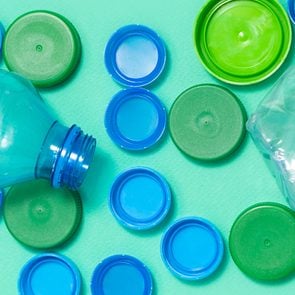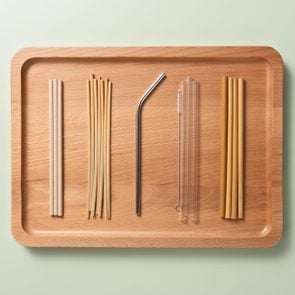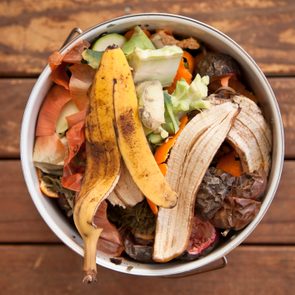What Is Upcycling, and How It’s Good for the Earth
Updated: May 09, 2023

Upcycling is more popular (and more important) now than ever. Sustainability experts break down what this means and how you can get involved.
When it comes to sustainable living, we all have a long way to go, and if you are feeling a sense of climate anxiety when it comes to the health of our planet, you’re not alone. As we are in the midst of a climate crisis, decreasing our carbon footprint is more important now than ever, which stems beyond just knowing how to recycle.
Upcycling has become increasingly popular in the world of sustainability, and for good reason. You may have heard the word thrown around at craft fair booths where clothes are upcycled, or seen it appear on your screen while reading about upcycling heroes fighting climate change—but what exactly is upcycling, and how can we use upcycling to reduce our overall consumption? We spoke to Elizabeth Teo, an environmental educator and founder of Zero Waste Cutie, and Stephanie Moram, CEO of Good Girl Gone Green and host of the Green Junkie podcast.
Before we dive into the nitty-gritty of upcycling, it’s important to note that everyone has the ability to make small changes. “When I first started my zero-waste journey, I thought I had to buy my way into this lifestyle,” explains Teo. “I read blogs with long lists of zero-waste products to buy, thinking, I’m going to be broke if I practice a more sustainable lifestyle! I felt guilty for owning any plastic at all, even if it were for reuse. I started my blog to show people that there are many ways to be sustainable, and you don’t have to spend money right away to be sustainable. You can use what you already have first and save your money.”
What is upcycling?
“Upcycling is taking a product and creating a new use for it, which can be of higher quality or value than the original,” explains Moram. Also known as creative reuse, the process of upcycling gives old objects a second life. It’s all about materials being repurposed into something of greater value. For example, this man was able to upcycle old jeans into cool denim glasses.
“I believe that people are becoming more aware of how their everyday actions can affect the environment,” explains Moram. “People are looking to lower the amount of waste they are creating, they want to save money, and it’s fun to take an object and bring new life to it.”
It’s also important to note that upcycling means using materials that you already have rather than going out to buy new materials to repurpose, but more on this later.
“Buying new has been overemphasized in the community, even though it’s not the main point of being zero waste,” says Teo. “The main point is to use what you have first! Then you can buy to replace them.”
Upcycling vs. recycling vs. downcycling: What’s the difference?
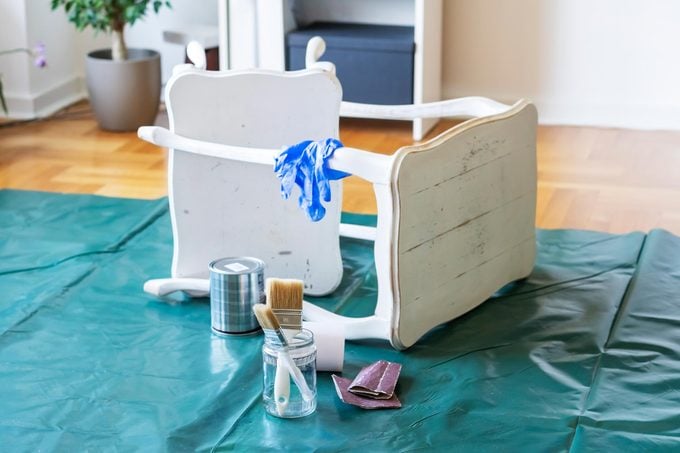
There are so many buzzwords when it comes to sustainability, but there are key differences in a few commonly heard terms—and the impact they have on the environment.
Perhaps the most common term we hear thrown around is “recycling.” Recycling is the process of collecting waste products and transforming them into new usable objects. Recyclables such as bottles, plastic, and cardboard are sent to recovery facilities that sort, clean, and process them into new materials that can be bought and sold. Things like plastic bottles can be melted down and reused to create new plastic items.
So we know upcycling is all about repurposing pre-loved objects, and recycling is about reusing the materials, but what about downcycling? The process of downcycling actually plays a role in the recycling process. Downcycling is when recycled materials aren’t as operationally strong as they once were, so they are turned into a product with a slightly lower value. For example, when plastic isn’t strong enough to be made into another bottle, it might be downcycled into something like carpet fiber.
What are the benefits of upcycling?
The most obvious benefit to upcycling is having less material make its way to landfills. The most crucial concern when it comes to landfills is the emission of methane, one of the most powerful greenhouse gases. It absorbs more of the sun’s heat than carbon dioxide, making it a leading contributor to climate change. Fewer materials ending up in landfills will contribute to the long-term health of our planet.
Another huge benefit of upcycling is using fewer natural resources. By using what we already have, we don’t have to take away any more raw materials from our environment than truly necessary.
This even applies to small businesses and larger corporations. If you have your own business and are looking to upcycle for your company, upcycling can actually help you minimize the cost of production in addition to decreasing your use of natural materials. By repurposing existing materials, you will ultimately be spending less and creating a larger profit margin.
What can be upcycled?
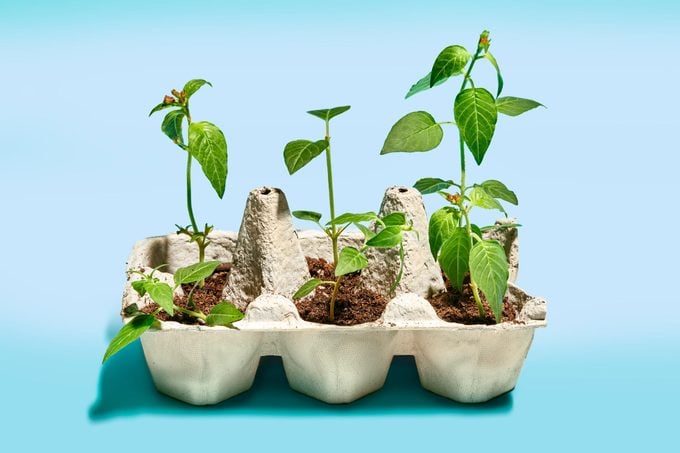
“Almost everything can be upcycled,” says Moram. You can turn any sort of trash into treasure if you think creatively—and it’s a lot easier than you may think.
Before you head to the recycling bin, Moram suggests using old glass jars for food storage, milk carton tops on mason jars, egg cartons to start off seeds for your garden, and old T-shirts as dishcloths.
“If you eat yogurt, you can wash and keep the plastic tubs and use them to store items,” recommends Teo. “If you have a worn-out plastic toothbrush you can use it to clean hard-to-reach areas or even your shoes. For the holidays you can use newspaper instead of plastic wrapping paper for your gifts. The idea is that you find creative ways to repurpose items you already have around your house so you can save money and have something functional or fun! By buying less you can help reduce how much clutter you bring into your home.”
On a larger scale, here are some common materials and reusable household items you can upcycle:
- Furniture: There are very few limitations to how to upcycle furniture. Broken pieces can be used in newer pieces of furniture or decor, or the entire piece can be reworked into a more functional set for your home. (Get creative!)
- Clothing and textiles: Clothing is a common item to be upcycled, as most textiles can be used again and again to make newer clothing. Steer clear of fast fashion, and instead see how you can repurpose what you already own to create another piece of clothing or something else altogether, like a tote bag.
- Electronics: Items like laptops, monitors, and keyboards can be upcycled into a new product without using energy in the manufacturing process. They can be turned into other household items and decor instead of ending up in a landfill.
- Plastics: More and more companies have been making use of plastic by incorporating it into items you would never think contain plastic, like shoes, clothing, and jewelry.
- Aluminum: Aluminum is another popular upcycling choice, as the flexible metal has been used to make furniture, kitchenware, and even musical instruments.
- Glass: Similar to Moram and Teo’s suggestions, glassware can be used to create newer household items like planters, jars for sauces and soups, and even as an eco-friendly coffee cup to take to your favorite cafe (paired with a reusable straw, of course).
Online shops that upcycle
If you’re looking to shop sustainably and find some eco-friendly brands, there is no shortage of options. Here are just a handful to start you off, according to Teo and Moram.
- Allbirds: This company uses discarded ocean plastic in the laces of their comfortable and stylish sneakers.
- ChopValue: This company upcycles old chopsticks to make beautiful home decor and furniture.
- Ellerali: This shop uses textile waste to create some trendy clothing pieces.
- Kroon Designs: This shop uses upcycled materials to make accessories.
- Pela Case: This brand uses flax straw waste to make sturdy (and stylish) phone cases.
- Reformed Treasures: This brand turns cutlery into jewelry.
- SKRP: This company turns old skateboards and snowboards into sunglasses.
- WearEmOut: This brand turns old T-shirts into graphic tees.
If you want to learn more about how to reduce consumption, read up about sustainable food, how to grow food sustainably, and how to shop sustainable seafood.
Sources:
- Elizabeth Teo, environmental educator and founder of Zero Waste Cutie
- Stephanie Moram, CEO of Good Girl Gone Green and host of Green Junkie podcast
- Habitat for Humanity: “What Is Upcycling?”
- U.S. Environmental Protection Agency: “Recycling Basics”
- University of Colorado at Boulder: “The Hidden Damage of Landfills”
- Environmental Defense Fund: “Methane: A crucial opportunity in the climate fight”



















